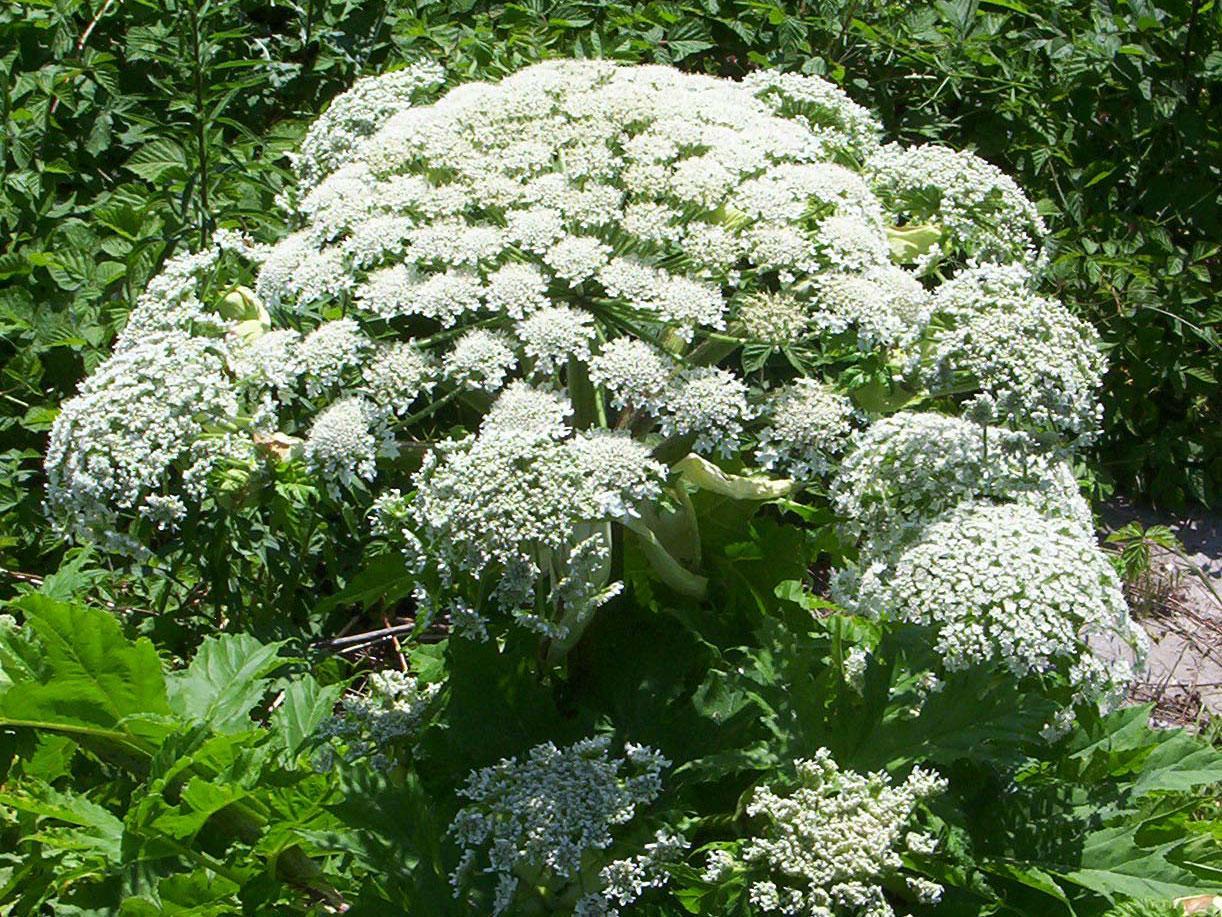What is giant hogweed? How to identify and treat burns from the UK’s ‘most dangerous’ plant
Non-native, invasive species is on the rise and can hospitalise those who touch it
Your support helps us to tell the story
From reproductive rights to climate change to Big Tech, The Independent is on the ground when the story is developing. Whether it's investigating the financials of Elon Musk's pro-Trump PAC or producing our latest documentary, 'The A Word', which shines a light on the American women fighting for reproductive rights, we know how important it is to parse out the facts from the messaging.
At such a critical moment in US history, we need reporters on the ground. Your donation allows us to keep sending journalists to speak to both sides of the story.
The Independent is trusted by Americans across the entire political spectrum. And unlike many other quality news outlets, we choose not to lock Americans out of our reporting and analysis with paywalls. We believe quality journalism should be available to everyone, paid for by those who can afford it.
Your support makes all the difference.An experienced gardener has come forward to remind the British public of the dangers of giant hogweed after finally being burned by the UK’s “most dangerous” plant having spent six years clearing it from riversides in protective clothing.
“We had been treating giant hogweed for the previous five or six weeks prior to being burnt,” said Martyn Ferguson from Aberdeenshire in Scotland.
“I was burnt due to me being careless, on the very last day and hour of the season.
“While removing my protective coveralls, I must have rubbed sap on my bare arm – it’s the only time I’ve been burnt in six years whilst treating giant hogweed.
“I was unaware I’d managed to get sap on my arm – it reacts to sunlight and it was several hours before I started to experience symptoms.”
So what exactly makes giant hogweed so hazardous, how can it be recognised and how can it be safely disposed of?
What is it?
Originally found in the Caucuses, the carrot family member known as Heracleum giganteum is thought to have been first introduced to Britain in 1817, when seeds were sent from Russia to Kew Gardens.
While initially favoured in ornamental gardens due to its pleasant appearance and impressive stature – reaching heights of more than five metres (16 feet) – it became illegal to grow the plant in gardens under the Wildlife and Countryside Act 1981, as a result of its being highly toxic.
Despite its innocuous appearance, its sap can cause highly painful burns, which blister within 48 hours, often hospitalising people and leaving them with permanent scars.
As Mr Ferguson indicated, the injuries result in the skin becoming very sensitive to sunlight, which can lead to further blisters, scarring or sun damage years down the line.
The sap can also lead to blindness if it gets in the eyes.
How can it be identified? (Don’t mistake it for cow parsley!)
While giant hogweed typically grows near river banks, canal towpaths, woodland and heathland, experts warn it has spread to gardens, parks and verges in recent years.
Plant Tracker – an Environment Agency-based database of invasive, non-native plants – reports hundreds of sightings across all four UK nations, as far afield as Inverness, Pembrokeshire, County Londonderry and Kent.
It is often mistaken for cow parsley, elderflower, bishop’s lace or hemlock due to its long stems and flat-topped clusters of white leaves.
While, like hemlock, its thick, bristly stems can also be pocked with purple blotches, it has fewer ferns and can grow significantly taller than either plant, with flower heads spanning up to two feet wide.
How can it be disposed of?
Although there is technically no statutory obligation for landowners to rid their properties of the weed, many property owners and local authorities choose to do so due to the dangers posed to the public.
It is, however, an offence to allow the weed to spread into the wild – so it is possible that landowners could be deemed responsible for outbreaks believed to stem from plants growing on their property.
Furthermore, landowners who fail to clear it from their land have in the past been handed anti-social behaviour orders.

Ideally, always wear gloves, face masks and ensure all skin is covered while dealing with giant hogweed, bearing in mind that anything coming into contact with it – be that clothing, tools or skin – will be contaminated and should be washed immediately.
Young plants can be pulled up using gloved hands when soil is wet, around May when it has reached a reasonable heigh but before it has produced its flowering spike, according to the Royal Horticultural Society.
For larger plants it might be necessary to loosen the roots with a fork first. Larger scale areas should probably be left to professionals to dispose of.
“There is no need to be scared of the plant – just use common sense – and take action if you identify it on your property,” a Mersey Rivers Trust spokesperson told The Independent, adding: “Keep children away from the plant until it has died off fully.
“The plant can produce up to 100,000 seeds, and the seed bank can last up to 15 years – meaning a prolonged period of vigilance for newly emerged seedlings and a prolonged period of treatment.”
What do I do if I touch giant hogweed?
The NHS advises covering the area and washing it with soap and water.
If you feel unwell after contact with giant hogweed, speak to your doctor.





Join our commenting forum
Join thought-provoking conversations, follow other Independent readers and see their replies
Comments